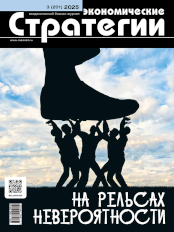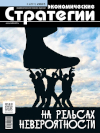Determining Functional Depreciation in Software Evaluation
DOI: 10.33917/es-3.201.2025.48-57
The article examines the issues of identifying the amount of the software’s functional obsolescence within the cost approach framework. It is shown that methodology for calculating the functional depreciation of the software in Russia has not been developed, and this causes the difficulties in assessing the cost of software products.
As a result, the authors propose a multifactor model for assessing the software functional depreciation.
References:
1. Federal’nyy standart bukhgalterskogo ucheta FSBU 6/2020 (utv. prikazom Minfina ot 17 sentyabrya 2020 g. N 204n) [Federal Accounting Standard FSBU 6/2020 (Approved by the order of the Ministry of Finance dated September 17, 2020 No. 204n)]. Ministerstvo finansov RF, available at: https://minfin.gov.ru/ru/ document/?id_4=133537-
2. Mezhdunarodnyy standart finansovoy otchetnosti (IAS) 36 “Obestsenenie aktivov» (vveden v deystvie na territorii RF prikazom Minfina Rossii ot 28 dekabrya 2015 g. N 217n; v red. ot 14 dekabrya 2020 g.) [International Financial Reporting Standard (IAS) 36 “Impairment of Assets” (Introduced in the Territory of the Russian Federation by the order of the Ministry of Finance of Russia dated December 28, 2015 No. 217n; as amended on December 14, 2020)]. Ministerstvo finansov RF, available at: https://minfin.gov.ru/ru/document?id_4=15327-mezhdunarodnyi_standart_finansovoi_otchetnosti_ias_36_obestsenenie_aktivov
3. Bartels B., Ermel U., Sandborn P., Pecht M.G. Strategies to the Prediction, Mitigation and Management of Product Obsolescence, 2012, Wiley, pp. 4–26.
4. Statista [Website]. Portal statisticheskikh dannykh, available at: https://www.statista.com/statistics/871513/worldwide-data-created/
5. Directive 2012/19/EU of the European Parliament and of the Council of 4 July 2012 on waste electrical and electronic equipment (WEEE). Official Journal of the European Union, available at: https://eur-lex.europa.eu/legal-content/EN/TXT/PDF/?uri=CELEX:32012L0019&from=EN
6. Prikaz Minprirody Rossii ot 11 iyunya 2021 g. N 399 “Ob utverzhdenii trebovaniy pri obrashchenii s gruppami odnorodnykh otkhodov I–V klassov opasnosti” (zaregistr. v Minyuste Rossii 30 noyabrya 2021 g. N 66097) [Order of the Ministry of Natural Resources of Russia dated June 11, 2021 No. 399 “On Approval of Requirements for Handling Groups of Homogeneous waste of I-V Hazard Classes” (Registered in the Ministry of Justice of Russia on November 30, 2021 No. 66097)]. Konsul’tantPlyus, available at: https://www.consultant.ru/document/cons_doc_LAW_402074/
7. Prikaz Minprirody 4 aprelya 2023 g. N 173 “O vnesenii izmeneniy v Trebovaniya pri obrashchenii s gruppami odnorodnykh otkhodov I–V klassov opasnosti, utverzhdennye prikazom Ministerstva prirodnykh resursov i ekologii Rossiyskoy Federatsii ot 11 iyunya 2021 g. N 399” [Order of the Ministry of Natural Resources of the Russian Federation dated April 4, 2023 No. 173 “On Amendments to the Requirements for Handling Groups of Homogeneous Waste of Hazard Classes I–V, Approved by Order of the Ministry of Natural Resources and Environment of the Russian Federation dated June 11, 2021 No. 399”]. Ofitsial’noe opublikovanie pravovykh aktov, available at: http://publication.pravo.gov.ru/document/0001202305290049













